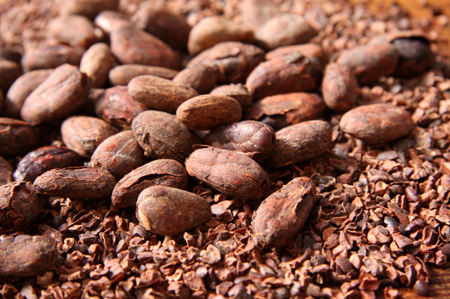Armajaro’s Ward Sees Dry Weather Threatening Ghana’s Cocoa Crop
Category: Cocoa
 (Bloomberg) – Patchy rainfall in West Africa is threatening cocoa production in Ghana as conditions remain too dry in the world’s second-largest producer, according to the $500 million hedge fund Armajaro Asset Management LLP.
(Bloomberg) – Patchy rainfall in West Africa is threatening cocoa production in Ghana as conditions remain too dry in the world’s second-largest producer, according to the $500 million hedge fund Armajaro Asset Management LLP.
Rains that usually benefit crops before the start of the harvest in October haven’t covered top growers Ivory Coast and Ghana uniformly, said Anthony Ward, co-founder of the London-based firm and portfolio manager of the CC+ fund, which trades mainly cocoa and coffee. Western and northwestern Ivory Coast got good rainfall while the eastern part of the nation and the west of Ghana had very poor rain, he said.
The worst Harmattan in three decades slashed output in West Africa in the season ending Sept. 30 as the Sahara desert winds dried out cocoa crops. Ghana will miss its cocoa-output target for a third year in 2015-16 as the lack of rainfall means growers will harvest 790,000 metric tons, 7.1 percent less that the government expected, a person familiar with the forecast said last month.
“It’s still too early to talk about next year, but we see Ghana as being very poor and Ivory Coast OK,” Ward said last week in an interview at the European Cocoa Association’s Forum in Dubrovnik, Croatia. “We can’t have any confidence until we know whether we will have Harmattan.”
Cocoa futures climbed to a six-year high in London in July as the Harmattan slashed output from the smaller of two annual crops in West Africa, resulting in a global shortfall of more than 300,000 tons, according to Armajaro. The winds can cut mid-crop potential by half, as seen this year, said Ward, who has traded soft commodities for more than 30 years.
Forecasts Difficult
Uneven rainfall patterns in West Africa have made it harder to forecast crops as pod counts vary depending on the sample taken, said Ward, whose CC+ fund can use as much as 25 percent of its capital to trade other agricultural commodities. Traders won’t have a good idea of what the 2016-17 crop looks like until the end of October, as the harvest will be about a month late, he said.
Armajaro isn’t alone in predicting different fates for West Africa’s main crops. Olam International Ltd. expects an average to slightly above-average harvest in Ivory Coast, but said the crop development in Ghana was probably similar to last year’s, which wasn’t good, Amit Suri, chief operating officer of cocoa at the world’s third-largest processor, said in a separate interview last week.
The chances of a La Nina weather pattern developing are fading and with them, prospects for a significant rebound in global cocoa production, Ward said. If the mid-crops are normal, next season’s balance could be anywhere between a shortage of 50,000 tons and a surplus of 100,000 tons, he said.
The U.S. Climate Prediction Center said earlier this month it was dropping its La Nina watch and lowering the odds to 35 to 45 percent from 75 percent in June. A day later, the Japan Meteorological Agency said the event had set in and predicted a 70 percent chance of it continuing through the winter period. The Australian Bureau of Meteorology said at the end of August that a late and weak La Nina was still possible. The weather pattern is usually associated with an increase in cocoa production in West Africa.
Cocoa prices have fallen 8.5 percent since reaching the July high partly on speculation supplies will overwhelm demand next season. Cargill Inc., the No. 2 cocoa grinder, is expecting a surplus of more than 200,000 tons in 2016-17, Harold Poelma, president of the company’s cocoa and chocolate unit, said in an interview in Dubrovnik last week.
“The price now is reflecting a good surplus,” Ward said. “If there was a deficit, it would be extremely dangerous. We can’t afford to have another deficit.”

